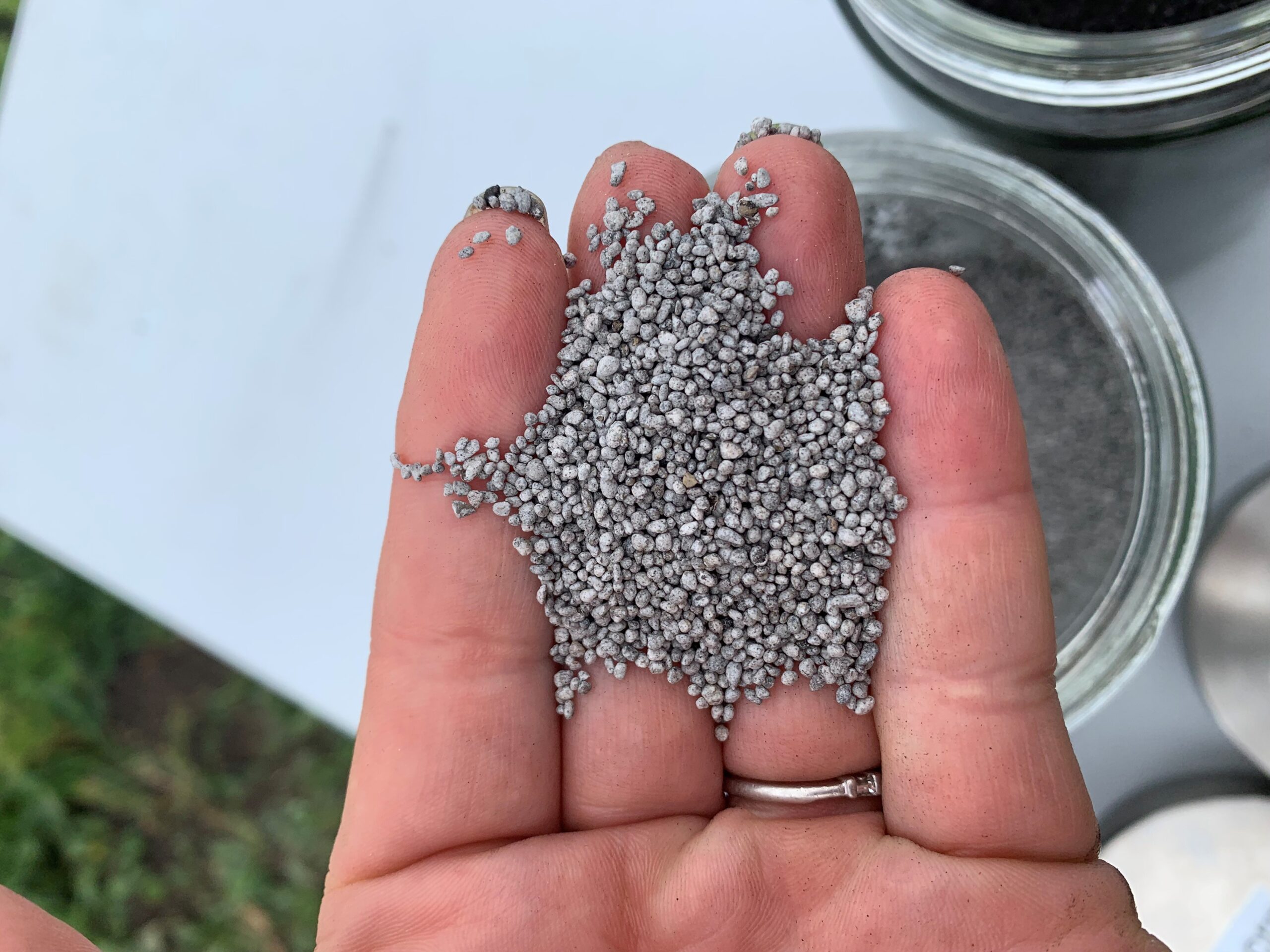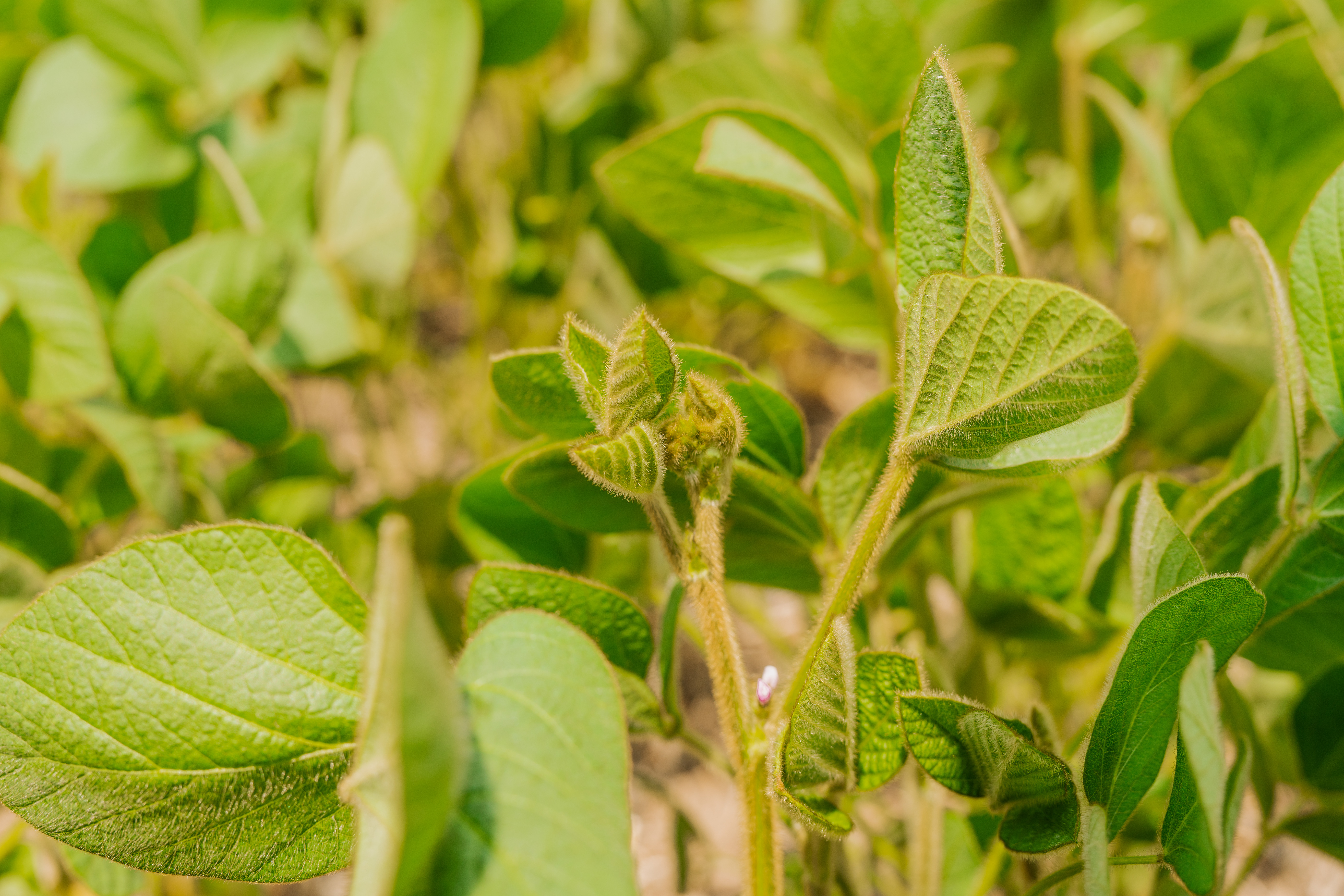Sensitivity of pulse crops to seedrow placed nitrogen, phosphorus and sulphur fertilizer products was lentils > peas ~ chickpeas > soybeans ~ black beans > faba beans. Overall and under good moisture conditions, a maximum of 10 kilograms of nitrogen per hectare (kg N/ha) rate as starter in the seedrow was suitable for the most sensitive and least responsive crops of lentils, peas, and chickpeas. A 20 kg N/ha rate was safe for faba beans, soybeans, and black beans.
Research at the University of Saskatchewan’s Soil Science department looked at several aspects of seedrow starter nitrogen, phosphorus, and sulphur fertilizer products. Crop safety and the response of pulse crops to starter nitrogen, phosphorus, and sulphur fertilizers were assessed.
2017 Greenhouse Study Evaluated Seedrow Safety
Soil was collected from a loamy textured Brown Chernozem field in southern Saskatchewan. Soybeans, green peas, faba beans, black beans, small red lentils, and Desi chickpeas were seeded into the soil with a simulated 15% seedbed utilization (1.5 inch opener on 10 inch row spacing) and grown for 30 days under greenhouse conditions.
Fertilizer product application rates were based on four starter nitrogen rates of 0, 10, 20, and 30 kg N/ha that were applied for seven different fertilizer blends/products. The amount of nutrients applied varied by product/blend. For example, a 10 kg/ha N rate applied as MAP (11-52-0) resulted in 47.3 kg phosphorus per acre also being applied with the seed. Conversely, the same 10 kg N rate in a blend of urea and MAP (28-26-0) resulted in only 9.3 kg phosphorus per acre applied.
Overall, the six pulse crops showed the following relative sensitivities (injury potential) from starter fertilizer placed in the seedrow: lentils > peas > chickpeas > soybeans > black beans > faba beans. Lentils, peas, and chickpeas could generally only tolerate the 10 kg N/ha rates while soybeans and black beans could tolerate 10 to 20 kg N/ha.
Faba bean emergence appeared relatively unaffected by all three rates of nitrogen (10, 20, and 30 kg N/ha) and showed least sensitivity to seedrow placed fertilizer. In a separate trial, a zero-tannin faba bean variety had some sensitivity to the 20 and 30 kg N/ha rates of fertilizer application, with reduced emergence compared to a tannin faba bean variety.
Overall, the ammonium phosphate sulfate fertilizer products tended to have less injury potential than the equivalent analysis blends when applied at a given nitrogen rate.
Soybeans and black beans were most responsive to starter fertilizer with increased 30-day biomass production and nutrient uptake. Pea, faba bean, lentil, and chickpea biomass and nutrient uptake did not respond greatly to the starter fertilizer applications, and there would be no benefit realized from going above 10 kg N/ha on this soil from any of the fertilizer products or blends.
Paired Row Soybean Field Trial
To complement the controlled environment trials, a field-scale soybean experiment was conducted in a field near where the soil was collected for the controlled environment study. A paired row side- band configuration was used to limit the potential injury to the soybean from the higher rates of nitrogen fertilizer.
A 75:25 blend of urea and monoammonium phosphate fertilizer (37- 13-0) was applied at a blended product rate of 0, 40, 80, and 120 pounds per acre (lb/ac). This provided rates of 0, 17, 34, and 51 kg N/ha and 0, 6, 12, and 18 kg P2O5/ha. applied as MAP (11-52-0) resulted in 47.3 kg phosphorus per acre also being applied with the seed. Conversely, the same 10 kg N rate in a blend of urea and MAP (28-26-0) resulted in only 9.3 kg phosphorus per acre applied.
The highest rate of nitrogen (54 kg N/ha) placed in paired row side- band configuration had the highest grain yield. This was despite lower initial plant counts observed at the high rate. The researchers observed poor nodulation throughout the growing season due to drought conditions, and would explain the yield response to applied N fertilizer.

Source: Galpottage Dona, University of Saskatchewan, 2018
2018 Soybean and Lentil Field Trial
Rates of fertilizer applied in the seedrow were based on four rates of starter nitrogen: 0, 10, 20, and 30 kg N/ha using a blend of urea (46-0- 0) and MAP (11-52-0) analysis of 28-26-0. This blend also supplied approximately 0, 10, 20, and 30 kg P205/ha. Fertilizer was placed in the seedrow with the lentils and soybeans under approximately 15% seedbed utilization.
Similar to the controlled environment study, a rate of 10 kg N and P205/ha as seedrow placed urea-MAP blend (28-26-0) appeared to be the rate that did not significantly reduce emergence, stand count, or biological nitrogen fixation, and was sufficient to maximize yield, nitrogen fixation, and phosphorus uptake.
Lentil Straw and Grain Yield
Based on results of this study, pulse crops that begin nitrogen fixation early and fix large amounts of nitrogen such as faba beans and peas should require the least amount of starter nitrogen. A 10 kg N/ha rate of the urea/MAP blend as starter placed in the seedrow appeared to be sufficient to maximize faba bean, pea, lentil and chickpea early season growth. Higher rates of 20-30 kg N/ha may be desirable for black beans and soybeans, especially under very low fertility and good moisture conditions.

Fertilizer is blend of 50% urea and 50% MAP by weight (analysis: 28-26-0). For the same yield component (grain or straw yield), means
followed by the same letter are not significantly different at P ≤ 0.05. The multi – treatment comparisons using Fisher’s protected LSD method.
Source: Galpottage Dona et al., 2019

Research was funded by the Saskatchewan Agriculture Development Fund and Saskatchewan Pulse Growers.
- H. Galpottage Dona, T. King and J. Schoenau. 2019. Tolerance and Response of Pulse Crops to Seed Placed N, P, S Fertilizer.
- H. Galpottage Dona. 2019. Assessing the Tolerance and Response of Pulse Crops to Seed Row Placed Fertilizer Blends and Composite Products Containing Nitrogen, Phosphorus and Sulfur. MSc Thesis, Department of Soil Science, University of Saskatchewan College of Graduate and Post Doctoral Studies, Spring 2019.



